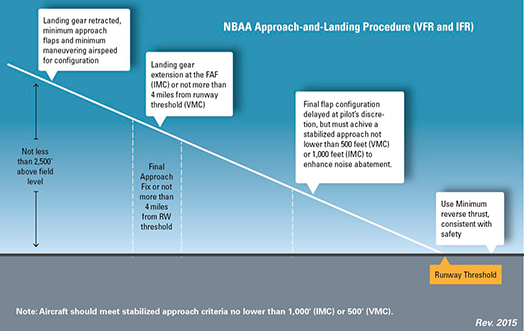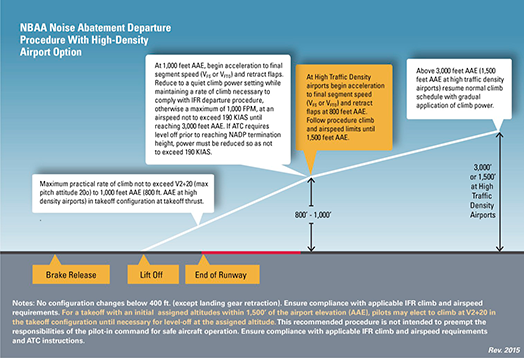Falcon Fld Airport
Mesa, Arizona, United States
Noise Abatement Information - Last update 08/13/2012
Overview
The Falcon Field Airport (FFZ) “Fly Friendly Zone” Program was created to establish and maintain a partnership between airport and community stakeholders. The goal of the Program is to minimize the effects of flight operations at Falcon Field on the surrounding community while also ensuring the long-term success of the airport.
Images / Diagrams
Arrivals
Runways: 04L, 04R, 22L & 22R | Arrival Only
VOLUNTARY FIXED WING NOISE ABATEMENT PRACTICES
These practices are recommended; some may not be advisable for every aircraft in every situation. Flight safety is our #1 priority. NOISE ABATEMENT PRACTICES SHOULD NEVER COMPROMISE SAFETY.
SPECIFIC ARRIVAL PRACTICES
Use Runways 4R and 4L whenever possible.
Avoid low-level, high-power approaches. Use reduced power settings whenever possible.
Fly high, tight patterns (3/4-1 mile downwind) whenever possible consistent with safety.
GENERAL ARRIVAL & DEPARTURE PRACTICES
Maintain 2400 FT (MSL) when flying over populated areas.
Training operations should use Runway 4L/22R whenever possible.
Avoid training operations between 2200L and 0530L.
Simulated engine failure should ONLY occur when a safe runway landing is assured.
When CLASS G airspace is in effect (2100L-0600L) use RIGHT traffic for RWY 22, LEFT traffic for RWY 4.
Avoid creating a sudden noise event – make smooth, slow engine RPM adjustments.
THANK YOU FOR FLYING FRIENDLY
Departures
Runways: 04L, 04R, 22L & 22R | Departure Only
VOLUNTARY FIXED WING NOISE ABATEMENT PRACTICES
These practices are recommended; some may not be advisable for every aircraft in every situation. Flight safety is our #1 priority. NOISE ABATEMENT PRACTICES SHOULD NEVER COMPROMISE SAFETY.
SPECIFIC DEPARTURE PRACTICES
Use Runways 4R and 4L whenever possible.
Avoid low-level, high-power departures.
Use reduced power settings whenever possible.
Climb at Vy speed until reaching traffic pattern altitude.
Avoid early turnouts when departing Runway 4R.
GENERAL ARRIVAL & DEPARTURE PRACTICES
Maintain 2400 FT (MSL) when flying over populated areas.
Training operations should use Runway 4L/22R whenever possible.
Avoid training operations between 2200L and 0530L.
Simulated engine failure should ONLY occur when a safe runway landing is assured.
When CLASS G airspace is in effect (2100L-0600L) use RIGHT traffic for RWY 22, LEFT traffic for RWY 4.
Avoid creating a sudden noise event – make smooth, slow engine RPM adjustments.
THANK YOU FOR FLYING FRIENDLY
Preferential Runways
Arrival & Departure
Use Runways 4R and 4L whenever possible.
Pattern Altitudes
ALL VALUES ARE MSL (FEET)
All Runways
TPA for Light Aircraft: 2400 MSL/1006 AGL
TPA for Large and Turbine-Powered Aircraft: 2900 MSL/1506 AGL
TPA for Rotorcraft: 1900 MSL/506 AGL
Flight Training
Extensive fixed wing and rotorcraft flight training activity.
Helicopter Operations
VOLUNTARY HELICOPTER NOISE ABATEMENT PRACTICES
These practices are recommended; some may not be advisable for every helicopter in every situation. Flight safety is our #1 priority. NOISE ABATEMENT PRACTICES SHOULD NEVER COMPROMISE SAFETY.
SPECIFIC PRACTICES – Helicopter Training Operations
Please contact Falcon Tower to discuss a Letter of Agreement (LOA) with the FAA for training operations at Falcon Field.
Please remain east of the Roosevelt Canal when training.
SPECIFIC PRACTICES – Transitioning the Area
Helicopters transitioning within 2 miles of the field should expect a mid-field crossing perpendicular to the runways (following midfield Taxiway B at 1900 MSL).
GENERAL PRACTICES
Reduce airspeed below maximum cruising speed to minimize blade slap.
Climb at best rate to reach altitude as quickly as possible.
Avoid maximum power climbs.
Make approaches directly to assigned landing areas.
Minimize time spent hovering.
Avoid sharp maneuvers such as rapid high “G” turns.
Avoid low level, high power Approaches/Departures.
Training operations should avoid residential areas west of the Roosevelt Canal.
Simulated engine failure should ONLY occur when a safe landing at the airport is assured.
Avoid creating a sudden noise event – make smooth, slow engine RPM adjustments.
Avoid training flights before 8:00 A.M. and after 6:00 P.M.
THANK YOU FOR FLYING FRIENDLY
Airport Contact Info
| Phone: | 480-644-6647 |
|---|---|
| Noise Hotline: | 480-644-2444 |
| Email: | airport.info@mesaaz.gov |
| Web Address: | http://www.mesaaz.gov/falcon_field |
| Noise Complaint Address: | http://apps.mesaaz.gov/FalconField/Comments.aspx |
| Address: | Falcon Field Airport 4800 E. Falcon Drive Mesa AZ 85215 |
NBAA Procedures
AOPA Noise Awareness Steps
Following are some general guidelines and techniques to minimize the noise impact produced by aircraft operating near the ground.
1. If practical, avoid noise-sensitive areas such as residential areas, open-air assemblies (e.g. sporting events and concerts), and national park areas. Make every effort to fly at or above 2,000 feet over the surface of such areas when overflight cannot be avoided.
2. Consider using a reduced power setting if flight must be low because of cloud cover or overlying controlled airspace or when approaching the airport of destination. Propellers generate more noise than engines; flying with the lowest practical rpm setting will reduce the aircraft's noise level substantially.
3. Perform stalls, spins, and other practice maneuvers over uninhabited terrain.
4. Many airports have established specific noise abatement procedures. Familiarize yourself and comply with these procedures.
5. To contain aircraft noise within airport boundaries, avoid performing engine runups at the ends of runways near housing developments. Instead, select a location for engine runup closer to the center of the field.
6. On takeoff, gain altitude as quickly as possible without compromising safety. Begin takeoffs at the start of a runway, not at an intersection.
7. Retract the landing gear either as soon as a landing straight ahead on the runway can no longer be accomplished or as soon as the aircraft achieves a positive rate of climb. If practical, maintain best-angle-of-climb airspeed until reaching 50 feet or an altitude that provides clearance from terrain or obstacles. Then accelerate to best-rate-of-climb airspeed. If consistent with safety, make the first power reduction at 500 feet.
8. Fly a tight landing pattern to keep noise as close to the airport as possible. Practice descent to the runway at low power settings and with as few power changes as possible.
9. If a VASI or other visual approach guidance system is available, use it. These devices will indicate a safe glidepath and allow a smooth, quiet descent to the runway.
10. If possible, do not adjust the propeller control for flat pitch on the downwind leg; instead, wait until short final. This practice not only provides a quieter approach, but also reduces stress on the engine and propeller governor.
11. Avoid low-level, high-power approaches, which not only create high noise impacts, but also limit options in the event of engine failure.
12. Flying between 11 p.m. and 7 a.m. should be avoided whenever possible. (Most aircraft noise complaints are registered by residents whose sleep has been disturbed by noisy, low-flying aircraft.)
Note: These recommendations are general in nature; some may not be advisable for every aircraft in every situation. No noise reduction procedure should be allowed to compromise safety.
Temporary Information (None)
None
Mandatory Restrictions (None)
None
Curfews (None)
None
Preferential Instrument Procedures (None)
None
Reverse Thrust (No Restrictions)
No restrictions
Intersection Takeoffs (No Restrictions)
No restrictions
APU Use (No Restrictions)
No restrictions
Engine Runup (No Restrictions)
No restrictions
Community Groups/Info (None)
None
Stage II (No Restrictions)
No restrictions
Stage III (No Restrictions)
No restrictions
Flight Track Monitoring (None)
None
Noise Ordinance (None)
None
Noise Monitoring (None)
None
Prior Permission (PPR) Operations (None)
None
Airport Maps
Airport Contact
| Phone: | 480-644-6647 |
|---|---|
| Noise: | 480-644-2444 |
| Address: |
Falcon Field Airport 4800 E. Falcon Drive Mesa AZ 85215 |
Weather Data

Loading Most Current Data...
Airport Data
| Elevation: | 1,394 ft |
|---|---|
| City: | Mesa, Arizona, United States |
| Sectional Chart: | Phoenix |
| Flight Service: | Prescott FSS |
| Control Tower: | Yes |
| Wind Indicator: | Yes |
| Fuel: | 100LLA |






